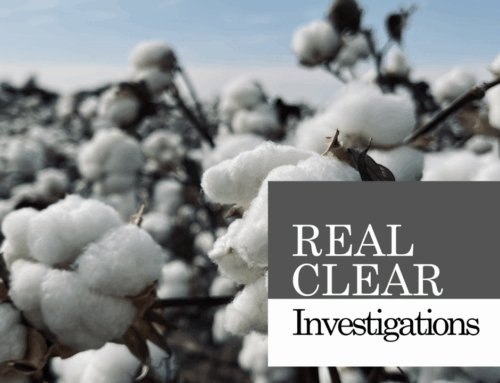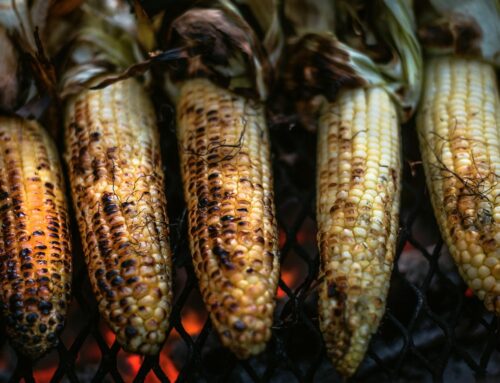This week, the House Agriculture Committee approved their 2018 farm bill on a party-line 26-20 vote. The bill sets federal policy for everything from income subsidies for businesses raising crops or livestock, to food assistance, rural development, and the promotion of agricultural exports. Unfortunately, the bill’s $867 billion price tag does little more than buy a slight rearrangement for the special interests that already have a deck seat on this subsidy steam liner. Lawmakers should scuttle this bill, go back to the drawing board and create a more cost-effective, transparent farm bill, responsive to the challenges facing agriculture and in which all are held accountable for results.
It’s been four years since Congress last enacted an omnibus farm bill and reality has been much different than what was forecast when the bill was passed. Upon enactment, the 10 year projections by Congressional Budget Office (CBO – official budget scorekeeper for Congress), anticipated reductions in spending on agricultural conservation programs (by $4 billion), nutrition programs (by $8 billion), and “shallow loss” income subsidies for agricultural businesses (by $20 billion compared to other subsidies that were ended).
In just the four years since passage, savings on conservation programs and nutrition programs have been greater than anticipated: conservation programs are already $3.98 billion under budget and nutrition programs have cost $21.5 billion less, with 6 years to come in the projection window. Meanwhile, “shallow loss” income subsidies are becoming a deeper loss for taxpayers, having shelled out $10 billion more in payments than originally anticipated, making these “cheaper” programs $5 billion more costly than what they replaced, with more spending to come.
Rather than reform the commodity programs to generate savings, the bill does the opposite.
The bill replaces reference prices for covered commodities (the price at which payments are triggered) with an “effective reference price” that will increase the government guaranteed price, and thus payments. It also makes cotton growers once again eligible for shallow loss programs by adding a new commodity “seed cotton.” Cotton, formerly known as, well, “cotton,” was removed as a covered commodity in the 2014 farm bill in order to comply with a long-running trade dispute with Brazil. (The World Trade Organization found that U.S. subsidies were – surprise – trade distorting). Bringing cotton back into the Title I programs may revive the dispute, which saw taxpayers spend more than $700 million subsidizing Brazilian cotton growers so that US cotton growers could still receive subsidies.
House Agriculture Committee leadership also inserted a number of loopholes that will increase spending on the income subsidy programs. In a brazen cash grab, the bill expands the definition of “family member” to include “first cousin, niece, and nephew.” While seemingly innocuous, this means even more members of the family that claim an interest in a farming operation will now be eligible for up to $125,000 in annual subsidies. Each. Lawmakers also exempted businesses organized as LLCs or Subchapter S corporations from being treated as one “entity” with a single payment limit. By looking at the income of each individual in these corporations instead, corporate farms will be able to harvest more subsidies while doing no extra work. Except maybe some paperwork.
Pet projects in previous farm bills revealed that lawmakers love to pile on special interest favors at the expense of taxpayers. Past is prologue. USDA would be mandated to make it a priority to research if they can create crop insurance policies for tomatoes, peppers, and citrus against losses due to a tropical storm or hurricane, despite these crops already having other revenue and yield insurances available. Currently, any farming or ranching business making more than $900,000 a year, after deducting expenses, can’t qualify for free disaster aid. This bill waives that exemption. Pecans have been added to the list of crops the USDA can impose import restrictions on in order to force higher prices for consumers. Oh, and the Secretary of Agriculture will report to the House Agriculture Committee on the feasibility of establishing a marketing and promotion program for natural stone. You read that correctly. A program to help sell more rocks. Rocks!
It is an understatement that the agriculture portion of the Agriculture and Nutrition Act of 2018 is a missed opportunity to right size the federal agricultural safety net to something taxpayers can afford.
Lawmakers should start from scratch and open up the process of writing and debating a farm bill. For too long, they have been written behind closed doors with special interests without consideration for consumers that use agricultural goods, communities impacted by agricultural production, and federal taxpayers that are footing the bill. There is a federal role in agriculture, but it must be cost efficient, transparent, responsive, and accountable to the taxpayers that are paying for it all. The current farm bill that just passed the committee fails on all counts.










